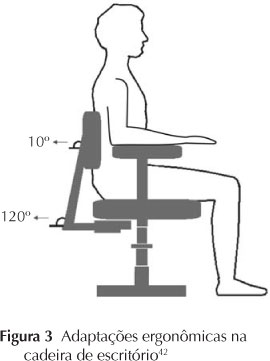The sitting posture is the most adopted in work environment, at school and in leisure activities. However, prolonged maintenance of this position causes the adoption of inadequate postures and overloads skeletal muscle structures, which may lead to spine pain and injuries. The purpose of the present review was to identify biomechanic, ergonomic, and clinical features involved in maintenance of the sitting position. The search in ISI Web of Knowledge, Medline, Pubmed and EBSCOHost data bases led to selecting 72 articles published between 1965 and 2010. Results show that there is not an ideal posture to be kept, but some postures are more recommended than others, like the upright sitting and the lordotic postures. Chairs influence the pattern of sitting, and their design allows for posture diversity. Changes in the chair, exercises to improve endurance and proprioception, as well as postural re-education, are useful interventions to reduce the impact of prolonged sitting position on the skeletal muscle system.
Biomechanics; Human engineering; Low back pain; Physical therapy (Specialty); Posture



